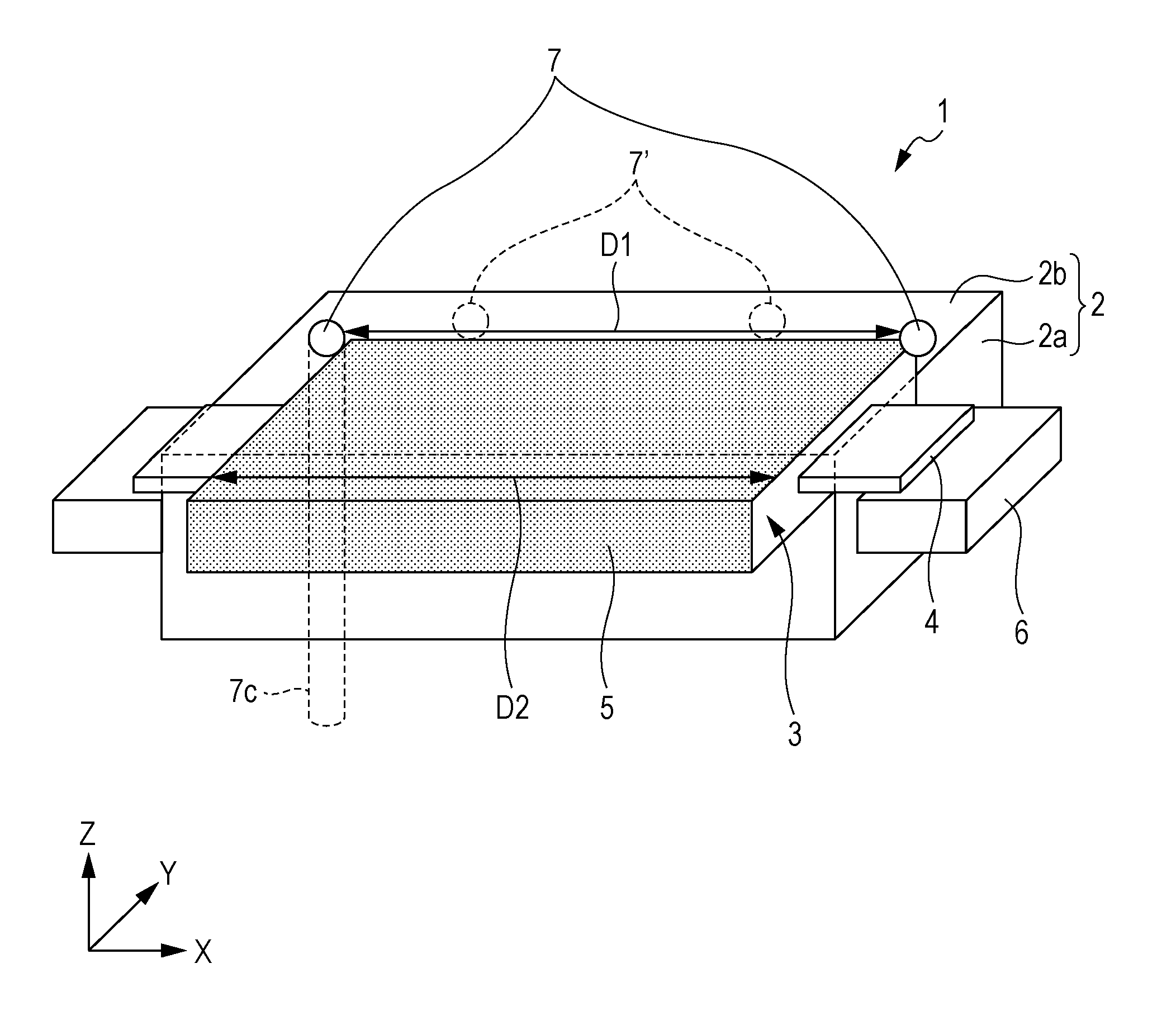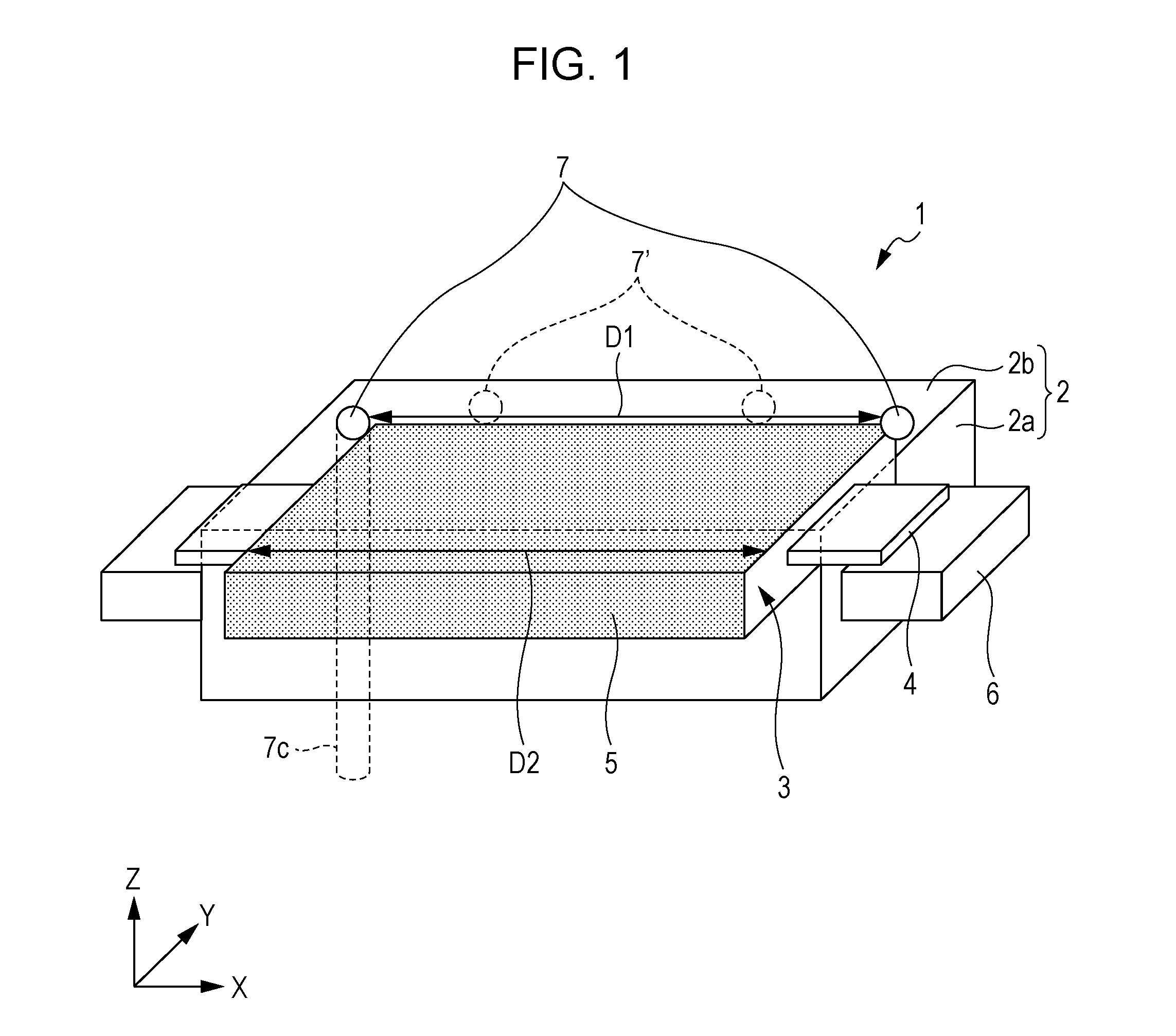Nonaqueous secondary battery and filling method for same
- Summary
- Abstract
- Description
- Claims
- Application Information
AI Technical Summary
Benefits of technology
Problems solved by technology
Method used
Image
Examples
example 1
[0071]The nonaqueous secondary battery 1 was fabricated in accordance with the above-described method for fabricating the nonaqueous secondary battery.
[0072]Furthermore, the filling was performed in a state where the battery can 2 was placed with the X-direction in FIG. 1 being oriented in the vertical direction (i.e., the direction of gravity).
[0073]When the battery can 2 was placed with the X-direction in FIG. 1 being oriented in the vertical direction, the two holes 7 were positioned at different heights and upper one of the two holes 7 was located at a higher position than the electrode laminate 3. The gas in the battery can 2 was exhausted through the upper hole 7, and the electrolyte was filled through the lower hole 7.
example 2
[0074]The following nonaqueous secondary battery (hereinafter referred to as a “nonaqueous secondary battery 1a”) was fabricated in accordance with the above-described method for fabricating the nonaqueous secondary battery.
[0075]More specifically, the nonaqueous secondary battery 1a had the same structure as the nonaqueous secondary battery 1 except that the heat shrinkable films 5 were omitted in the nonaqueous secondary battery 1a.
[0076]Furthermore, the filling was performed in a state where the battery can 2 was placed with the X-direction in FIG. 1 being oriented in the vertical direction.
example 3
[0077]The nonaqueous secondary battery 1a was fabricated in the same manner as that in EXAMPLE 2 in accordance with the above-described method for fabricating the nonaqueous secondary battery.
[0078]However, the filling was performed in a state where the battery can 2 was placed with the Z-direction in FIG. 1 being oriented in the vertical direction.
PUM
 Login to View More
Login to View More Abstract
Description
Claims
Application Information
 Login to View More
Login to View More - R&D
- Intellectual Property
- Life Sciences
- Materials
- Tech Scout
- Unparalleled Data Quality
- Higher Quality Content
- 60% Fewer Hallucinations
Browse by: Latest US Patents, China's latest patents, Technical Efficacy Thesaurus, Application Domain, Technology Topic, Popular Technical Reports.
© 2025 PatSnap. All rights reserved.Legal|Privacy policy|Modern Slavery Act Transparency Statement|Sitemap|About US| Contact US: help@patsnap.com



